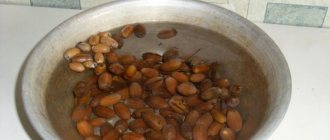Instead of a horizontal board or cube, a round vertical surface is used. Noise sources are fixed along its edges. The result is something like a sunflower on a metal stem.
In order not to spoil the view with such structures, the bottles can be buried in the ground with their necks up. You should put as many of them as possible. Due to the wind blowing into the neck, a low hum will occur that penetrates well through the hard surface. Sometimes you have to be convinced of this feature of low frequencies when your neighbors have a music center with the bass turned on behind the wall.
There are special repellent devices on sale, for example, EcoSniper. There are sound and vibration-sound models. Power can be supplied from a solar battery. The noise created does not cause inconvenience to humans, but it makes the life of small mammals unbearable. Animals have much more acute hearing. Fluctuations that we do not notice are often perceived very acutely by them. The waves are directed underground and affect mainly those who are currently sitting in holes.
- Country cottage area
How to get rid of mole crickets and protect your summer cottage from its appearance
Traps, or first methods
The first thing that almost every summer resident can think of doing is creating special devices for catching moles. Let's analyze the two most common and effective (in the context of comparison with “analogs”) options. Note that we are not talking about how to completely get rid of moles on the site, but only about how to reduce their number. Methods:
Pit
- "Pit". If you dig up a wormhole, you will find a certain “hole” in it, where you need to place a pre-prepared pan, glass jar, bucket or even a five-liter plastic bottle. It is important that the edges of this “trap” are located just below the level of the passage and are masked with rollers of earth. Also, the entire excavated area will need to be covered with light-proof material (you can use thick fabric or a regular board: there are endless options here). Accordingly, during the next “check” of the move, the mole will find itself in a trap, from which it will subsequently not be able to get out on its own.
Pipe trap
- Pipe trap . You can create a more intricate design. Take a two-liter plastic bottle, cut off the bottom and neck and replace them with valves that are made from the necks of other bottles; they should be directed towards the center of the main one. The necks must be cut lengthwise into petals about a centimeter in size; subsequently they will easily bend under the weight of the animal and let it inside, after which they will immediately return to their original position. Accordingly, the animal will no longer be able to get out. Such traps can be made not only from plastic bottles, but also from steel pipes; then the valve will need to be made analogous to a “door” that opens only in one direction. You will need to set the trap on the mole's turn; It is also important to cover it with a light-resistant material.
It is necessary to check the set trap regularly: at least once a day (preferably more often). Having discovered a mole in it, you can take it out of the way and release the animal “to the wild.” However, you need to take it out carefully: it is advisable to use special construction gloves.
An interesting point: sometimes even experienced summer residents who do not want to think about how to get rid of moles on their property and look for the most effective method use an ordinary shovel. However, we do not recommend such a technique, which involves a long “wait” for the animal to appear, due to its labor intensity and low efficiency.
On the hook
It is worth noting another simple alternative solution, which for some has a “fatal” flaw: it is quite brutal. We are talking about catching animals with fishing hooks. To do this, you will need to lay out a fishing line with several hooks (or use a fishing tee), bringing its end to the surface and attaching it to a pin or stick stuck in the ground (they must be stable). To enhance the effect, you can put a worm on the hook, and use bells as an “alarm”, hanging the latter on a pin. Accordingly, the moving mole, having caught on the hook, is literally “torn to pieces.”
What is special about moles?
To begin with, you should study their lifestyle well so that the fight against them has a positive effect. The mole belongs to the class of mammals that eats various insects. It can grow up to 20 cm in length. It lives underground and moves by digging underground passages. It is distinguished by its body covered with velvety fur, which is considered the most valuable. The villi grow at right angles, so the mole can move in any direction without any problems. The color of the animal can be dark gray or black. The tarsi are short but well developed, with a spade-shaped extension at the ends. Thanks to this feature, moles dig fairly long tunnels without any problems. They have almost no vision, but their sense of smell is highly developed, thanks to which the mole easily finds food for itself in the thickness of the earth.
The nest of an underground animal is designed in such a way that there is one circular passage at the bottom, and a second, narrower passage at the top. Between the upper and lower passages there is a nest, which is lined with soft substances (plants). The outer passage is connected by 10 tunnels, 6 of which go to the upper passage, and 3 are directed directly to the nest. Here, in the nest, the female gives birth to 3 to 6 cubs. The animals are born from April to June. Under favorable conditions in the month of August, the female can again give birth to moles. Pregnancy lasts about one and a half months.
Moles mainly eat bugs, worms, woodlice, frogs, lizards and even snakes. Thanks to their unique hearing and sense of smell, moles easily find food for themselves. Vision is practically absent, but it helps him navigate the surface of the earth. In winter, moles do not sleep, but dig tunnels for themselves at much greater depths.
Popular amateur methods of repelling moles
Let us immediately note that the effectiveness of using any “folk” means of fighting moles - and especially repellent ones - is in great doubt. Often, such methods, which serve as an answer to the question regarding how to get rid of moles on a site , do not lead to the desired result: even if it is possible to scare off most of the animals, a certain number of them remain as regular visitors to the summer cottage. However, trying to cover the topic as broadly as possible, we will describe the most common and rational ways to scare moles away from a site without the use of professional means; Let's do it in the form of a list:
- "Turntables." The most classic way involves creating the so-called. “pinwheels” - special “devices” that can be made from ordinary bottles or cans. All you need to do is bend the blades and install the homemade windmill on the stuck metal pin. Accordingly, at the slightest wind, the structure begins to spin and make sounds that can scare away not very brave moles. Naturally, the number of “turntables” should be quite significant, moreover, they can cause acoustic discomfort not only to animals, but also to people.
- Reed. You can stick reeds and stems into molehills, since it is believed that such a sound scares away the animals; however, the effectiveness of this technique is minimal, but it is easy to implement.
- Bottles. Another extremely simple folk method is to use ordinary glass bottles. The latter are dug into the ground at an angle of forty-five degrees - so that their necks stick out at a height of 7-8 centimeters. The wind blowing into the bottle will be “transmitted” to the ground. However, this method “works” in reality quite rarely.
Preventive measures
In order not to subsequently fight moles on your site, you should take preventive measures that will help prevent the appearance of animals. One method is to fence the dacha area around the entire perimeter. To do this, you will need to bury roofing felt, slate, sheets of tin or metal mesh into the soil to a depth of 1 meter, but so that another 30 cm of material remains above the surface. The joints of the sheets must be sealed very carefully so as not to give the insectivore a chance to get inside. The method is quite labor-intensive, but it allows you to get rid of uninvited guests forever.
Another method of prevention is easier to use. Experienced gardeners claim that by planting plants at the dacha along the entire perimeter whose smell the mole cannot tolerate, you can completely prevent its appearance on the site. These include: marigolds, castor beans, imperial hazel grouse, decorative onions, garlic, beans, peas, black beans, Siberian scilla, daffodils.
Source
Get rid of moles using scents
- You can put rotten fish or meat and rags doused with gasoline or kerosene in the tunnels. The most common option is to put in rotten fish heads. However, there are two disadvantages to consider. Firstly, an unpleasant odor can spread throughout the area itself and cause trouble not only for moles, but also for people. Secondly, often the “reaction” of moles to such means of struggle is not migration, but, on the contrary, the creation of even more passages.
- You can use a small container of ammonia. The latter is placed in a “hole”, after which it explodes using an ordinary firecracker. Accordingly, due to the pressure caused by the explosion, the smell spreads quite far. Of course, such a technique can hardly be called particularly “humane” (if this word can be applied to moles), since the spreading gas can negatively affect the health of animals. Another disadvantage of the method is that ammonia, being a volatile compound, disappears quite quickly.
- You can place tops of legumes or hemp in the mole tunnels, but experience suggests that this method extremely rarely leads to the results of interest.
- The most “cunning” method involves inserting carbide into the passages, which, when interacting with a liquid, is capable of releasing acetylene with a certain amount of phosphine. The last method of scaring off moles, however, can be harmful not only to animals, but also to people: extreme caution must be used here.
Harm and benefits of moles
Moles are insectivorous animals that live underground. Representatives of the species have an elongated, streamlined body covered with shiny fur. The vertical arrangement of the villi helps individuals quickly move under the ground in any direction in the area. The color of the animals is brown and black.
Moles dig underground passages using paws with huge claws on their toes. Feeding branches run at a depth of 5 cm from the surface, and permanent ones - up to 0.5 m. The owner regularly walks around the property, collecting bugs and worms. The perimeter of the site is covered with multi-meter tunnels and separate rooms. In one day, one adult can build a system 30 m wide.
Farmers are often convinced that moles gnaw on plants, thereby destroying the crop. All representatives of the species feed on insects:
- pest larvae;
- sleeping pupae;
- earthworms.
Large males can eat a frog, mouse or lizard that gets into a hole. Animals underground use a lot of energy, so during the day they consume food equal to their weight. Rodents often hide in underground passages and feed on the root system of plants.
If moles appear on a summer cottage, then the surface of the earth is covered with rubble. Animals can accidentally damage crops that cross their path. Plants left without support sag and die. Often voracious representatives of the species destroy not only pests, but also beneficial earthworms.
How to get rid of moles: semi-professional methods
Naturally, semi-professional methods of fighting will be much more effective when compared with folk methods. As a “minimum” here we can designate special means and traps that are purchased in the appropriate stores. But it is worth noting that professional extermination of moles is much more effective and has a longer-term effect.
WE RECOMMEND: To guarantee the destruction of moles on your site, we advise you to contact our professional service. We will get rid of moles with a guarantee.
Checkers
One of the classic options is the use of smoke bombs, which can destroy moles. It is quite obvious that such a method of control can hardly be called “humane”: as a result of the use of special fumigants, animals die. Special destructive agents made from calcined cyanide and aluminum phosphide are quite effective; especially if you use them in sufficient quantities.
Ultrasound
If we talk about pure repelling, we can highlight special repellents and ultrasonic generators. The latter, having a negative impact on the hearing of moles, force them to go as far as possible. This technique is especially effective if you want to anticipate a problem; for example, when moles appear on one of the neighboring plots.
The most radical method involves the destruction of the moles' main food: if you treat the area with substances that will cause snails, beetles, larvae, worms and spiders to disappear, the moles will simply lose interest in this place. However, we note that such a struggle refers to the so-called. “last resort”, since it requires serious financial expenses.
Reasons for appearing on the site
Moles eat a lot and often; if they stop doing this, they can die within 24 hours. They most often live alone, but can also live in family groups, so several hundred meters of underground roads can be laid under a garden plot or vegetable garden in just a few days. Molehills are located not only parallel to the plane of the earth. The mole's lair, in which the female gives birth to her cubs, is usually located at a depth of 1.5 m to 2 m.
Moles will not be able to live where they cannot provide themselves with food and water. In garden plots where organic farming is practiced, there is always an abundance of earthworms - the main food of moles. After all, cultivated garden and garden plants are regularly fertilized and watered, that is, people provide the necessary conditions for soil fertility and nesting of worms. Behind the worms, moles appear on the site. Nearby streams or other sources of water are the second reason for populating a fertile vegetable garden.
Is it worth spending your money, strength and nerves?
Getting rid of moles on your property or in a park area on your own is a difficult, unpleasant and painstaking task. The use of all kinds of baits, independently placed mole traps, and traps often turn out to be ineffective. Time is wasted, and the harm caused by these animals multiplies. A more effective way to combat moles that have appeared on the site would be to contact specialists.
If in the spring, when the first signs of the vital activity of these mammals are detected, measures are not taken to get rid of them, then in a fairly short period of time, significant damage can be caused to the design and ecology of the site. Getting rid of moles on your property in a timely manner is an important task, as these animals are rapidly increasing their population size. The number of dug molehills with characteristic mounds of fresh earth will increase progressively.
Reviews from summer residents
Mikhail, 63 years old, Poltava
Every spring we always started fighting moles in our garden plot; we didn’t have the energy to look at the molehills near the fruit trees. We tried everything: traps and poisons, but it only had a temporary effect. Therefore, I decided to buy an ultrasonic device for repelling pests - “ Tornado OZV.01.” I bought three of them with a reserve, since on my site there are eight fruit trees with a powerful root system, a well and the foundation of a house that prevent vibrations from spreading in the ground. I dug in the repellers so that only the battery compartment cover remained outside. I placed them in the center of the site at an equal distance from each other, after which new molehills did not appear until the end of autumn. We dug up both carrots and potatoes safely.
Tamara, 46 years old, Nevinnomyssk
I want to share my experience of fighting this underground inhabitant. I made the trap with my own hands. The mole easily climbs into it, but cannot get out. The bottom is cut off from a 1.5 liter plastic bottle, then a second bottle of the same size is taken - the neck is cut off (the cap is screwed onto it), a “funnel” is left and the bottom is cut off. Then 10 longitudinal cuts are made in the second bottle until it becomes a flat part - it looks like long petals. Then the second bottle with its narrowed part is inserted into the open passage of the first, and the joint is wrapped with tape. The mole trap is ready. I put it in a mole hole, and the animal falls into the trap through the entrance of the second bottle, but back against the narrowed petals and cannot get out. Many have already been caught like this.
Ruslan, 45 years old, Temryuk
I fight moles with traps. I pierce the ground around the molehill with a metal rod, then determine the direction of the moves and carefully place it in both directions. Then I close the cutout tightly. I catch about six per season. The process is labor-intensive, but reliable. You can’t get rid of moles forever in this way, but a drop wears away the stone.
The most effective method
Fumigants
Considering that these rodents lead an underground lifestyle, independent destruction of moles is an ineffective and complex process, which often turns into a headache for the owner of the land. In this regard, to solve the problem of unwanted underground guests, as a rule, they resort to the help of professional experts.
Pest control experts carefully examine the land plot and install special mechanical traps in different places, which are usually checked every three days until the parasites are completely removed from the cultivated land.
Folk remedies
Flooding minks is the most popular way to combat moles. To defeat the animal, you need to add copious amounts of water to the entrances. The procedure will help in the early stages of settlement, before the beast has made a system of underground passages. If the labyrinth is built to completion, the owner will hide in a distant safe lair.
Before you get rid of moles on your property using folk remedies, you need to know the enemy’s weaknesses. Animals have a very sensitive sense of smell, so farmers use substances with a pungent odor. Unpleasant aromas scare away uninvited guests and force them to leave the garden. Rags soaked in:
- antifreeze;
- fuel oil;
- chlorine bleach;
- vinegar essence.
All animals do not like infusions of cigarette butts and snuff. Red pepper powder works well to repel pests. The effect in the area disappears after precipitation. Rotten eggs, rotting vegetables and herring heads emit a sharp, unpleasant odor that moles do not like. Spoiled food is placed in holes.
The persistent aroma of mothballs does not dissipate in the area for a long time, creating uncomfortable conditions for underground inhabitants. Rags soaked in kerosene solution are placed in the passages. You will need 100 ml of caustic liquid per bucket of water. The smell of castor oil is unpleasant to animals, so the oil is placed in bowls in the garden. Bouquets of peppermint are placed in the holes.
Use of magnesium and aluminum based fumigants
Fumigants are special chemical compounds that kill harmful animals with gas released. Professionals very often use fumigants to combat moles, since they are very effective in the fight against underground rodents. In the vast majority of cases, fumigants for controlling moles are special tablets that must be placed in holes according to the official instructions for the chemical preparation. The main fumigants against moles today are Magtoxin, Phostoxin, as well as some other, less popular ones. They belong to hazard class 1 pesticides!
ATTENTION!!! According to SanPiN 1.2.2584-10 “Hygienic requirements for the safety of processes of testing, storage, transportation, sale, application, neutralization and disposal of pesticides and agrochemicals.” POINT: 2.8. All work with pesticides of hazard classes 1 and 2 , as well as the use of restricted-use pesticides, is carried out only by persons with special professional training. Involvement in carrying out work using pesticides of persons who have not been trained in the safe handling of these products is not permitted.
Why fumigation is the best method
Let's look at the use of a fumigant using the example of the drug Phostoxin and Magtoxin for moles:
- Under the influence of moisture, poisonous phosphine tablets will begin to decompose, and after some time the active substance will begin to react with water. This will lead to the appearance of gas, which is extremely toxic for moles.
- By inhaling such a gas, the animal will receive severe poisoning, which leads to the instant death of the mole.
- When using a chemical, it is imperative to follow safety precautions, since if used incorrectly, this drug can pose a danger not only to moles, but also to people.
Fumigants based on aluminum and magnesium have excellent activity. They quickly and easily penetrate the soil. The active substance of such drugs effectively destroys adult moles and their offspring. The effectiveness of such drugs has been proven more than once. This is the best way to get rid of moles on the site.
It is worth noting that magnesium-based fumigants decompose much faster than products that contain aluminum phosphide. The maximum concentration of the isolated active substance in chemicals with magnesium is achieved after 24–36 hours. For comparison, over a similar time period and under the same conditions (temperature 20 ° C and humidity 60%), products based on aluminum phosphide release approximately 72% of hydrogen phosphide, while magnesium phosphide is released almost completely.
Contacting the professionals of our company has a number of advantages:
- specialists work any day of the week, they will come to your site upon request;
- For their work, they use environmentally friendly preparations, as well as proven methods of catching moles
- guarantee of high-quality work and the absence of moles in the near future;
- the highest degree of safety for trees and plants growing on the site, pets and people.
How to deal with moles on a personal plot or in a country house
When owners of summer cottages or household plots discover symptoms of the presence of moles, they often use traditional methods of fighting the animal. The variety of these methods is impressive, but their effectiveness leaves much to be desired. So what methods are meant?
Using repellent plants
Some plants are natural mole repellents. To do this, it is recommended to spread the tops of black beans, marigolds or hemp around the area. It’s even better to plant special plants between the beds of cultivated plants and along the perimeter of the site that emit odors that are unpleasant for the mole.
These animals tolerate the following types of plants extremely poorly:
- fritillaria;
- sagebrush;
- marigold;
- celery;
- garlic.
- imperial hazel grouse;
- spurge;
- beans;
- lavender;
- peppermint;
Having stumbled upon similar plants in the garden, moles will leave their usual tunnels and begin digging new labyrinths.
Use of pets
It has long been noticed that if a dog or cat lives in a house and often walks around the area, the likelihood of moles living there is noticeably reduced. Cats often hunt the underground digger and, having caught it, will certainly eat it. And the loud barking of a dog does not allow the mole to hunt and sleep peacefully.
In addition, the animals do not like the smell of these pets, and they will prefer to dig their tunnels somewhere else.
Fencing the site area
The method is very labor intensive, but very effective. There are also options here:
- A fence should be built around the perimeter of the entire site, buried in the ground. The material for the fence should be slate sheets or fine mesh. Such a fence is lowered to a depth of 70 cm, and the height above the soil can be any, at least 20 cm.
- Digging a protective ditch. To stop the mole, you need to dig a ditch 70 cm deep and of arbitrary width. When the ditch is dug, it is filled with concrete with the addition of broken bricks, stones and rubble.
If your dacha is constantly subject to mole raids, then you need to adopt one of the two options above. Catching moles with traps and traps will not give the expected effect.
Creating background noise
Moles love to hunt and sleep in complete silence, and the presence of extraneous noise causes them anxiety. To scare off underground diggers, summer residents make simple noise devices.
Options for the simplest noise devices:
- Plastic bottles or metal cans are slightly cut and their edges are bent. The result is something similar to blades capable of capturing the wind. These “crafts” are attached to long reinforcement rods that are buried in the ground. When there is wind, this entire structure rattles loudly, giving the mole no rest. In addition, vibration emanates from the rods, which is transmitted to the ground. Noise and vibration are too much for a quiet animal. He will certainly go to another, quieter place.
- Hollow reed stalks are stuck into the discovered passages. The reeds will hum unpleasantly in the wind. This will drive moles out of the area.
- A similar hum can be created by burying a glass bottle in the soil at a 45-degree angle. Gusts of wind will enter the neck, causing a terrifying roar. The moles will not be able to put up with him, and will be forced to retreat.
- Some vegetable growers find animal holes and set off firecrackers left over from the New Year celebrations. In addition to the noise effect, which is unpleasant for the mole, the firecracker also produces smoke. He is also unpleasant to the animal.
Types of moles
In nature, there are more than 40 species of moles, which are distributed into 15 genera. Animals are common in Europe, Asia and North America, but are not found in hot Africa. Representatives of 6 species live in Russia.
The European or common mole has a spindle-shaped dense body, ranging from 12-15 cm in length. The elongated flat muzzle has small eyes and membrane-covered ears. The massive hands with large clawed fingers have a bristly edge. Short thick fur stands upright and helps the animal move in burrows. Representatives of the species love solitude and settle in areas within a radius of 4 km from their relatives.
The common Caucasian mole looks like the European variety. Distributed from western Ciscaucasia to the Black Sea parts of Turkey. Prefers to live in deciduous forests.
The small blind mole is the smallest in the family - from 8 to 12 cm. The body is covered with dark brown fur. The eyes are hidden under a thin film. Settles in forest and mountain meadow areas. If it has to live next to a common Caucasian species, it digs deeper holes.
The Siberian mole is widespread in the Altai Territory and southern Yakutia. Representatives have pronounced sexual dimorphism. In males, the body size reaches 20 cm, and in females - no more than 17 cm. On the head there are open eyes with movable eyelids. The color of the silky coat is found in both gray and dark brown.
The Far East is inhabited by narrow-area endemic moles from the genus Moger - Japanese and Ussuri. Representatives of the species completely lack visual organs, even in a rudimentary state. They lead an underground lifestyle and can inhabit fields and meadows.











